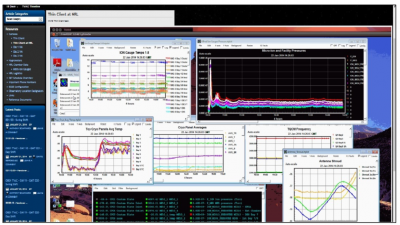Some recent papers

This post is bit of an advertisement, in that I wanted to share with you some recent papers that I was involved in. Recent here is to be taken with a bit of grain of salt, since some the papers noted below are from as far back as 2010. Think of “recent” as in “not reported yet”.
Purge and Molecular Contamination Infiltration
L. Brieda, J. Newcome, T. Errigo, “Diffusion of Water into Purged Volumes”, SPIE Systems Contamination: Prediction, Measurement, and Control, 2014, (pdf)
This is one of two papers that I worked on for the 2014 SPIE Optics and Photonics Conference. In this work, we used miniature humidity and pressure sensors connected to an Arduino board to obtain real-time data for a cavity purged with dry nitrogen gas. This project was a lot of fun since I basically started from designing the experiment, and with the help of my co-author, developed methods for data collection. I was also able to perform a numerical simulation and compare it to the experiment. The numerical model was based on a combined solution of the advection-diffusion and Navier Stokes equations. This work was funded by the MMS and GOES-R projects at NASA GSFC. This paper is currently being revised in preparation for a journal submission.
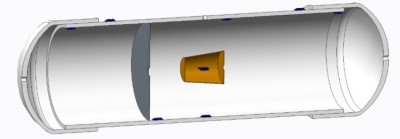
Hall Thruster Potential Model
Geng, J., Brieda, L., Rose, L., and Keidar, M., “On applicability of the “thermalized potential” solver in simulations of the plasma flow in Hall thrusters”, J. Appl. Phys, 114, 103305 (2013); doi: 10.1063/1.4821018 (pdf)
This is a paper in which I helped the primary author, Jinyue Geng, with the development of a novel 2D potential solver for Hall Effect thrusters. This model has now been incorporated into our Starfish simulation code.
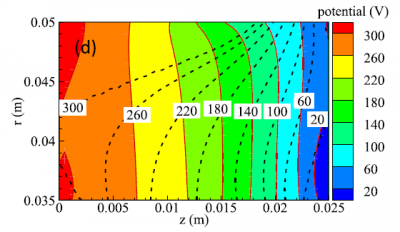
Micro-cathodic Arc Thruster Update
M. Keidar, T. Zhuang, A. Shashurin, G. Teel, D. Chiu, J. Lucas, S. Haque, and L. Brieda, “Electric Propulsion for Small Satellites”, Plasma Physics and Controlled Fusion, Vol. 57, No. 014005, 2015 (pdf)
This paper reviews the development and testing of a micro cathodic vacuum arc thruster at George Washington University’s MicroPropulsion and Nanotechnology Lab (where I did my Ph.D.). I was mainly involved with the numerical model of the device. This data will be revisited and updated for the upcoming International Electric Propulsion Conference, IEPC 2015.

Vacuum Bakeout of a Sensitive Space Hardware
J. Hill, K. Black, L. Brieda, P. Dickens, K. Montt de Garcia, D. Hawk, A Hayato, K. Jahoda, J. Mohammed, “Lifetime Estimation of a Time Projection Chamber X-Ray Polarimeter”, UV, X-Ray, and Gamma-Ray Space Instrumentation for Astronomy XVIII, 2013 (pdf)
This is another work that was performed supporting a project at NASA Goddard Space Flight Center. I was supporting development of the polarimeter for the GEMS mission, status of which is currently in limbo. The polarimeter is an instrument for determining the orientation of incoming X-rays, by monitoring the tracks left by electrons generated by the incoming wave interacting with a working medium. From this data, it’s possible to determine the rotational speed of massive objects such as neutron stars or black holes. In order to obtain accurate results, it was imperative that the working medium was pure and free of molecular contaminants that could interact with the signal. As such, it was important to perform extensive vacuum bake of all parts in contact with the working gas. The tolerances were too low to be measured with a QCM, and as such, we used a pressure rate of rise method to try estimating the beginning of life outgassing rate.
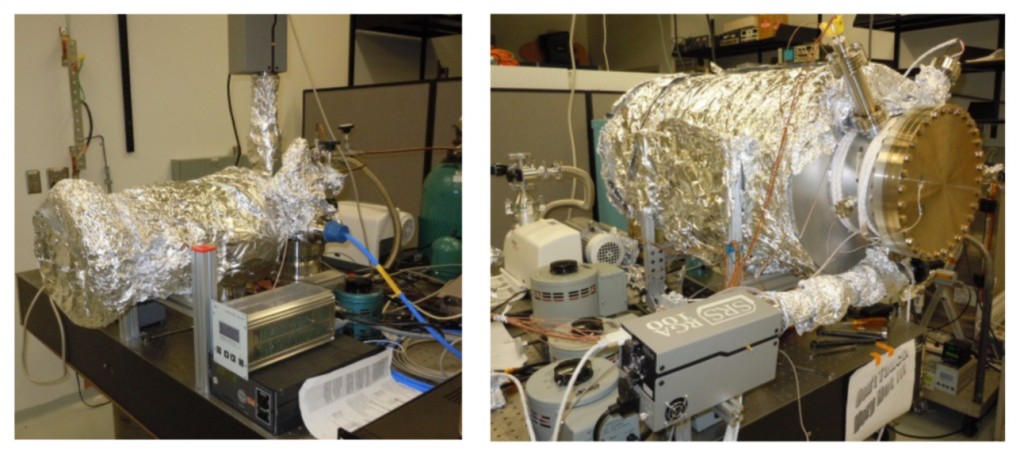
Modeling of Dust Particulate Distribution during Launch
L. Brieda, A Barrie, D. Hughes, and T. Errigo, “Analysis of particulate contamination during launch of the MMS mission,” SPIE Optics and Photonics, August 1-5, 2010, San Diego, CA, SPIE-7794-23 (pdf)
This is an older paper dating back to 2010, but it’s relevant now, since MMS is scheduled to be launched this coming March. All four MMS satellites were recently shipped down to Cape Canaveral and are currently ongoing some additional testing prior to encapsulation into the launch vehicle. In this work, I used a simulation code developed at GSFC to model the trajectories of microscopic dust particulates in a launch vehicle fairing. Several different conditions were considered, including the air conditioning flow while the rocket is sitting on the pad and the launch depressurization.
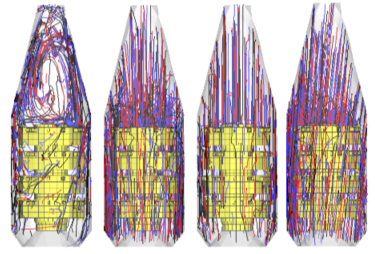
MMS Thermal Vacuum Testing: Contam Perspective
G. Rosecrans, L. Brieda, T. Errigo, “MMS Observatory TV Results: Contamination Summary”, 28th Space Simulation Conference, Baltimore, MD, 2014 (pdf)
Besides doing the particulate transport modelling, I was also quite busy supporting thermal vacuum testing from the side of contamination. This involved several areas: making sure the spacecraft and supporting structures are clean and sufficiently baked out, maintaining low enough pressure during transitions and for instrument high voltage testing, supporting thruster firing testing, determining sources of pressure spikes, and assisting in attempting to reduce pressure due to presence of Helium (which is very difficult to remove using cryo pumps). In addition, I also developed some programs for parsing chamber telemetry and RGA data. The entire campaign, from certifying the chamber, through dry runs, to the four individual observatory thermal vacuum tests took about a year.
